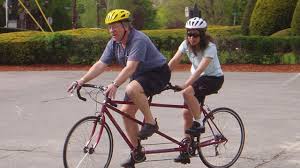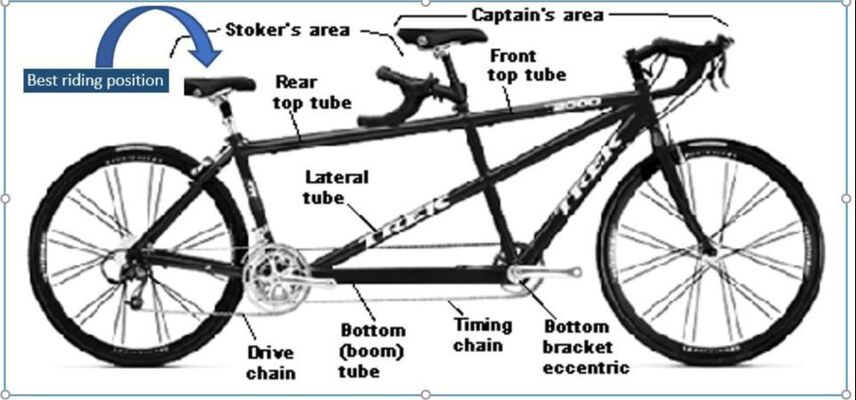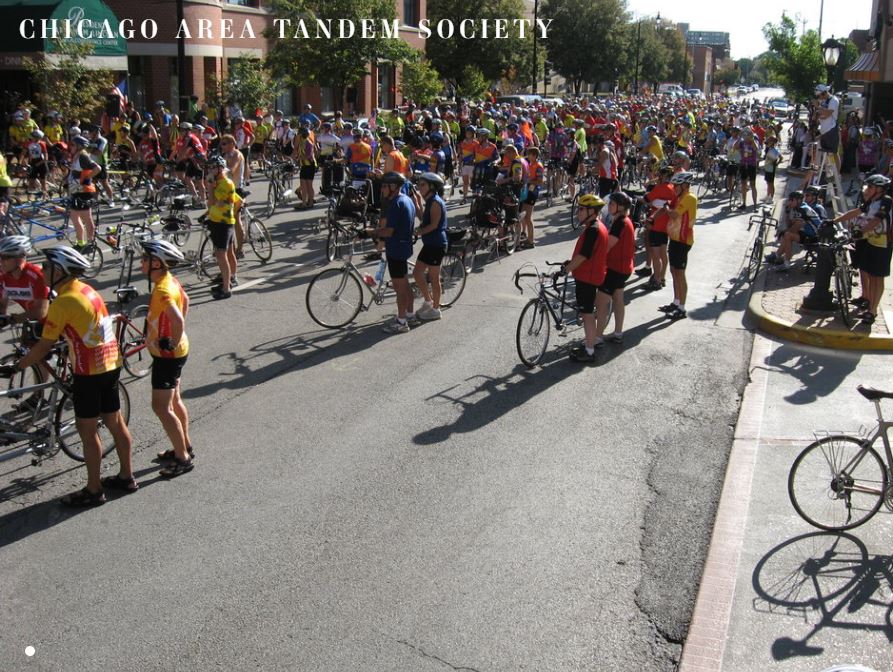 The rear position on a tandem might just be the best place to be on a bike! According to Sam Waterstreet and Mary Devoto, speakers at the October 15 Evanston Bicycle Club meeting, the stoker, or person in the rear position, does not have to steer, brake, shift, and cannot be blamed for making a mistake! They can luxuriously just sit, pedal, and enjoy the scenery! Sam and Mary are members of the Chicago Area Tandem Society which has members throughout the Chicago area and is currently the largest group in the Midwest. Most tandem organizations are organized by state and the Midwest Tandem Rally over labor day weekend and the Northwest Tandem Rally being the largest events in the country, with some smaller regional rallies. What is a Tandem Bike A tandem bike is designed to be ridden by more than one-person fore to aft, not side by side. Patents related to tandem bikes date from the late 1890s. The history of tandem bike riding follows closely that of regular cycling, i.e. at the turn of the century there was tandem racing and pacing in velodromes, tandem enthusiasts lobbied for better roads before motorists did, and interest peaked in the 1960-70s. There are just as many different types of tandems as there are single bikes: cruisers, upright, recumbent, mountain, folding, trikes, electric, and belt drive. Because they are so long, the bottom tube must be stronger to eliminate flexing of the frame. Most frames are designed to have the stronger rider in the front. There are a few unique parts such as the timing chain, bottom bracket eccentric, stoker handlebar, and stoker seat post, but most parts are standard. When selecting a tandem, the most important factor is fit—it has to fit two different riders. There are also bikes designed for 3 riders (triple), 4 riders (quad) or 5 riders (quint). 6 riders (hex). The longest tandem in the world is 135 feet long and holds 20 people! Transporting tandems is done in vans or on a regular rear bike rack with the wheels removed. Some frames are designed with S&S couplers so they can be disassembled into smaller pieces. The benefit of riding a tandem is for riders of different abilities to stay together on the road. This is useful for couples, riding with a child or someone with a disability. Communication between the two riders is important to coordinate when to lean, stand on the pedals, and lift pedals as to not bottom out. A tandem goes faster than most can go on a single bike because there are 4 legs powering the ride. Because of the additional weight, they struggle on uphills, but fly downhill. Mary reported her personal record is 59 mph on a downhill. Benefits of a Tandem Bicycle Being a stoker, unfortunately, is not all daisies and daffodils. Bumps in the road are felt more in the back, it is difficult to see straight ahead through the front rider, and you need to give up control. But members of the Chicago Area Tandem Society might agree it is a small price to pay to share a ride in the great outdoors. Matching jerseys are optional. Comments are closed.
|
Earth Rider Blog about CycingAuthorSharon Kaminecki and others comment on adventures in bicycling and other stories Categories
All
Archives
August 2023
|





